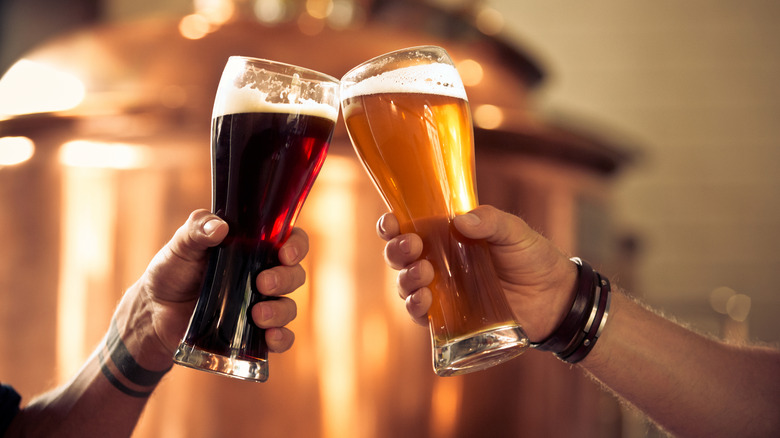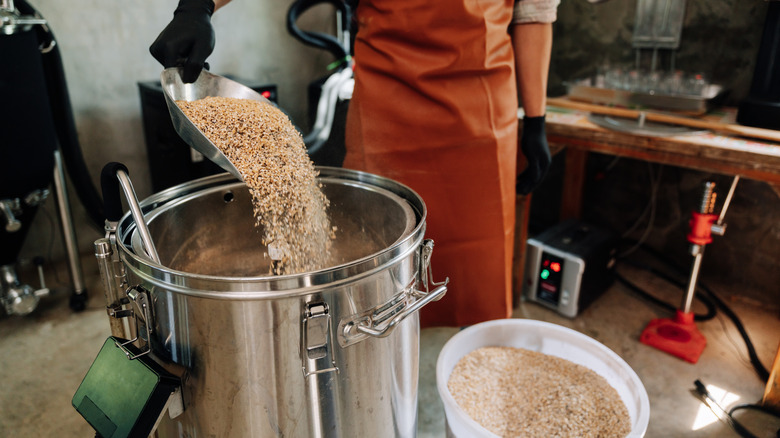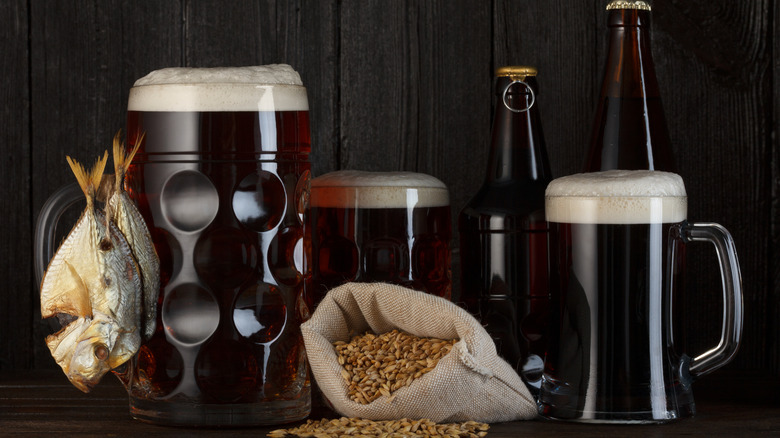What's The Difference Between Ales And Lagers
The difference between "lagers" and "ales" goes deeper than the name on the beer's label. Some sources will discuss their history and fermentation methods when explaining what distinguishes ales from lager. However, the primary distinction is the yeast used in making the beer.
Every type of beer is made with either lager or ale yeast. Ales are fermented with Saccharomyces cerevisiae yeast, while lagers are fermented with Saccharomyces pastorianus yeast. That being said, a new generation of hybrid yeasts are pushing the boundaries of what a beer can be.
In addition to the yeast, ales and lagers differ in how they are fermented. Ales are fermented in high temperatures from 60 degrees Fahrenheit to 75 degrees. During the process, foam develops on top of the ale mixture, which is why the yeast is called top-fermenting. It takes an ale a week or two to ferment and condition the beer, ready for the bar or store shelves. Lagers ferment at colder temperatures, usually 42 to 55 degrees. The yeast feeds slower in the cooler temperatures and sinks to the bottom of the tank, producing a foamy "head." The slower, cooler process also takes longer to ferment, from two weeks to two months.
The yeast and fermentation create other traits of lagers and ales
The beer fermentation process and the type of yeast used (like this beer, which used yeast from Roald Dahl's writing chair) are what produce the characteristics that lagers and ales are known for. Because of the bottom-fermenting process associated with Saccharomyces pastorianus yeast, lagers have a cleaner flavor and are lighter in color than ales. Malts influence the flavor of the lager. Ales, however, because of the top-fermenting process of the Saccharomyces cerevisiae yeast, produce a more robust, fruity, spicy brew that doesn't need much help to provide the flavor they are known for. Ales also tend to have a higher alcohol content because they brew faster and at higher temperatures.
These basic differences produce some unmistakable flavors and appearances in the brewed final beers. However, those differences get confused when considering hybrid beers. One type of hybrid beer is fermented with lager yeast but at a temperature much higher than 55 degrees. Another would be an ale which is fermented at 55 degrees or lower. Brewers experiment with fermentation methods and yeast to produce different colors and flavors of beer. The brewer usually labels the beer a lager or ale according to the yeast used and the behavior exhibited during fermentation, but for hybrids those labels can be misleading.
A historic difference to note
Another interesting difference between ales and lagers (the most popular type of beer) is their history. Ales have been a part of the world since ancient times. Since all beer is either an ale or a lager, ales have been around since beer was first invented thousands of years ago. Lagers were first recorded in the 1400s in Bavaria (now a part of Germany). The first recorded Pilsner lager was created by Josef Groll in Pilsen, Czech Republic in 1842. Pilsners and the lager-style beer spread after refrigerated travel was invented.
Despite their differences, the best way to determine if a beer is a lager or an ale remains simple. All brewers label their beer according to the fermentation and the yeast used. So, if there is ever a doubt about the type of beer you are drinking, all you have to do is check the label.


